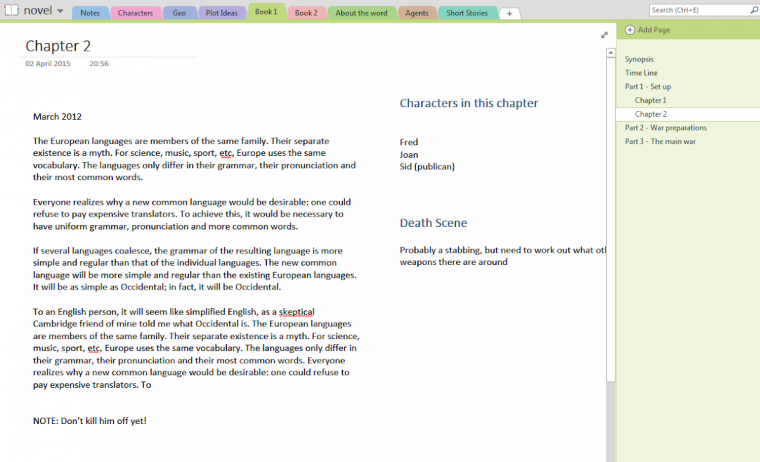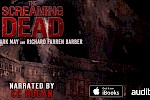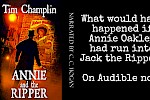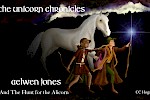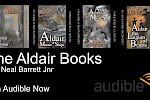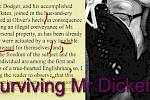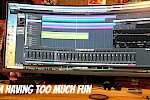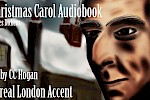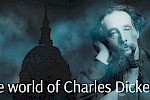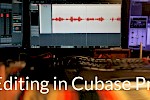(See also Using Word for Writing Novels , Creating a map and Planning a Saga)
NEW: Download a notebook template to get you started. See: Free OneNote Notebook Template
I have to admit to being a bit of a Onenote addict; I use it for shopping lists, for keeping track of clients and jobs, for writing recipes, and just about anything else that I need to remember and keep a hold on.
Using Onenote for planning and keeping track of my plots and characters for my novels, is quite simply perfect!
Onenote has been part of Microsoft Office for many years, but more recently, MS has made is available as a free download for multiple devices: http://www.onenote.com/
If you have not played with Onenote before is it simply a note taking system that is like creating multiple filing cabinets. Each notebook would be a drawer, each tab along the top is a file in the drawer, and each page down the right hand side is a page in the file. And really, that is about it. There is no save button to mess you up and each page can have text, images, bits of websites, emails, tables, attachements to documents, or any other rubbish you decide to shove in there.
So, a wonderful big empty note taking system for you to play with. Of course, like anything else, how you organise your notebook will make a huge difference to not only your planning, but continual notes as your write your book. Now, I have to own up and say that I sit in front of three huge monitors and this does make my life easier. I have my word doc open in the middle screen, I have Onenote open on the right and I have things like the OED, web browser and other rubbish on the left screen. (I also put a nice background wallpaper across all three monitors that puts me in the mood; sad bugger!)
But, whatever your working set up, using Onenote works best if it is always open during your creative day. So, how do I set mine up? I was tempted to put up screens of the notebook for the fantasy I am currently writing, then decided against it. I have to say that half a million words in, my notes are now huge and incredibly complicated, but they did not start that way.
Initially, I created just a handful of obvious tabs across the top.

- Notes - A general tab to put any stray thoughts or useful links and references that have no specific relevance yet.
- Characters - Both individual important characters and minor ones
- Geo - if it is a fantasy, you might want to work out the geography, rough up some maps and so on
- Plot Ideas - all those bits and pieces that you might want to sneak in
- Book 1 - well, this would be my actual plot
- About the world - religion? Period? Clothing? Languages?
- Agents - record of who you contacted and when
And so on. Onenote is very easy to navigate, so splitting your notes up into very precise subject areas is not only possible but adviseable and will make it easier to keep track in the long run.
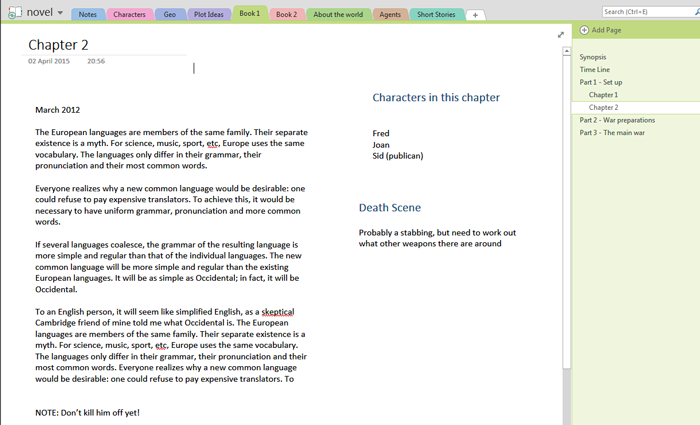
So, this is how I control my plot. One of my biggest headaches is the WHEN in stories. When did someone do what? How old are they by chapter 8? And so on. I lose track very, very easily, for some reason.
I now do two things. I create a page called Timeline which just has a table with years and months, and then I add to this when chapters should start and end. I also add important dates, like birthdays of characters. Sort of a very simple hand crafted calendar. Then, on each chapter page, I always add in "when" things are happening.
As you can see, my novel is being split up into parts. Now these will not actually appear in the book, but are a good way of keeping track. In Onenote you can indent pages on the right list by just grabbing them and sliding them right. Although they are not a strict technical page tree, they look like it, and that is all your brain needs. So, in each of my "parts" I might write a synopsis for that section of the book. Then in the chapter pages, write a much more detailed plot. Remember, these are my notes and I am writing the actual book in Word. I might also add little notes about one off characters, important events, things I know I am going to get wrong and so on. With Onenote, each block can be grabbed and moved around so you could even organise it a little like a mind map, if you wished.
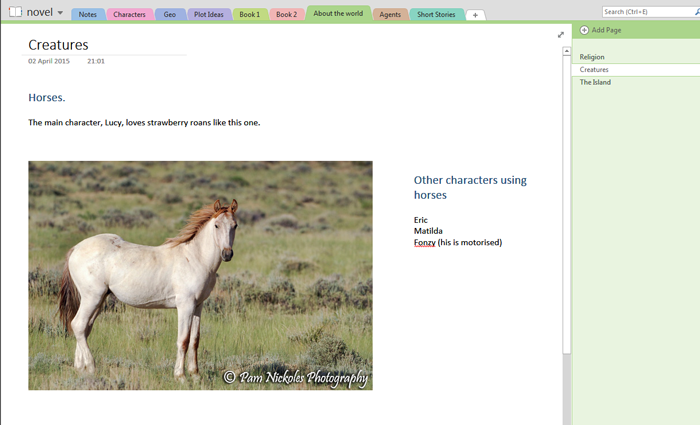
As I mentioned you can drag and drop images or bits of webpages, so I often will look for images that help me think. It might be a horse like above, or often examples of types of terrain so I can think about how the character would feel at that moment.
I drag in plans for castles, pictures of boats, types of knot, lists of references - it is very easy, so just chuck in anything as you go.
Keeping it going
You can work out your own way of planning with onenote, but I find it really comes into its own during the writing process. Now I know some authors plan everything to the Nth degree in advance, but I don;t. I am not always even sure of my characters names of what the weather is like when I start in on Chapter One. So, I have forced myself to keep adding notes of everything I invent on the fly. If I walk into a pub and talk to the landlord, I will note down the name of the pub and the landlord's name. I might not return there, but then again, I might, so I would rather not have to search all the way through 150,000 words of novel just to find a name I need for book 2.
My plots often change of I suddenly think of a good joke aside, so again, noting it down somewhere logical, means I do not trip myself up later - my favourite one is realising that the hero's horse changed sex magically in chapter three....
Onenote cannot solve everything and it cannot force you to keep notes if you are really bad at doing so, but if you love keeping track, fleshing out ideas quickly, and messing around to make things work, then Onenote is ideal. Additionally, if you have multiple devices, you can link the notebooks up, so you can add plot notes from anywhere.
Have Fun!
CC

